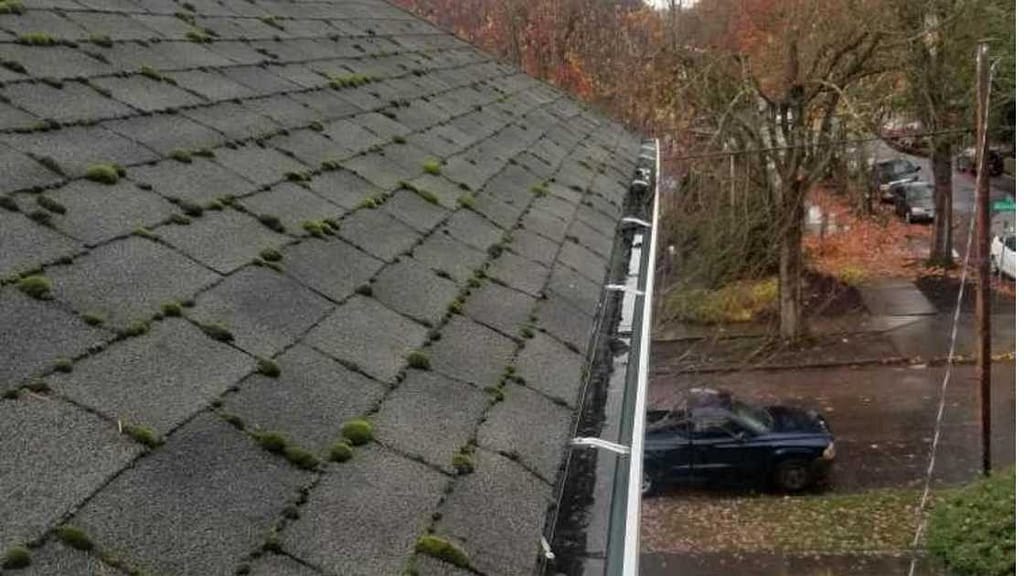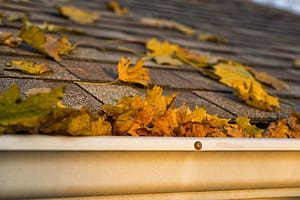
Standing water in gutters is a common issue that many homeowners face, especially during rainy seasons or after storms. While it may seem like a minor inconvenience, neglecting standing water in your gutters can lead to significant structural damage and other issues.
In this article, we will discuss the dangers of standing water in gutters, common causes, and what you can do to address the problem effectively.
Dangers of Standing Water in Your Gutters
Standing water in gutters may appear harmless at first glance, but it can pose several significant dangers to your home and health. Understanding these risks is crucial for taking prompt action to address standing water issues in gutters. Below are some of the key dangers associated with what might result in standing water in gutters:
- Structural Damage: Standing water in gutters can put excessive weight on the gutter system and the fascia board, leading to sagging or even detachment from the roofline. This can compromise the structural integrity of your home and result in costly repairs.
- Roof Damage: Prolonged exposure to standing water can cause water to seep under the shingles, leading to roof leaks and water damage to the underlying structure of the roof. This can eventually result in the need for roof repairs or replacement.
- Foundation Problems: When gutters holding water overflow due to standing water, it can result in water pooling around the foundation of your home. Over time, this can weaken the foundation and lead to cracks, settling, or even structural failure.
- Mosquito Breeding Ground: Standing water in gutters provides an ideal breeding ground for mosquitoes and other pests. This can pose health risks to you and your family, as mosquitoes are known vectors for various diseases.
- Mold and Mildew Growth: Moisture from standing water in gutters can promote the growth of mold and mildew, which can spread to other areas of your home, causing respiratory issues and property damage.
- Water Infiltration: If standing water in gutters is not addressed promptly, it can overflow onto the roof or siding, leading to water infiltration into the interior of your home. This can damage walls, ceilings, and insulation, and promote the growth of mold.
Common Causes of Stagnant Water in Gutters and What to Do
Stagnant water in gutters is a common problem that can result from various underlying issues. Understanding the common causes of stagnant water in gutters is essential for effectively addressing the problem and preventing further damage to your home. Below are some of the most frequent causes of stagnant water in gutters and what you can do to remedy them:
- Clogged Debris: One of the most common causes of standing water in gutters is the accumulation of leaves, twigs, and other debris that block the flow of water. Regular gutter cleaning is essential to prevent clogs and ensure proper drainage.
- Improper Slope: Gutters should be installed with a slight slope towards the downspouts to allow water to flow freely. If the slope is incorrect, water may pool in certain areas, leading to standing water. Adjusting the slope of the gutters can help alleviate this issue.
- Poor Drainage: Inadequate or blocked downspouts can prevent water from draining properly from the gutters, resulting in standing water. Clear any obstructions in the downspouts and ensure they are directing water away from your home’s foundation.
- Lack of Maintenance: Regular gutter maintenance, including cleaning and inspection, is essential to prevent standing water issues. Consider hiring a professional gutter cleaning service to ensure your gutters are clear of debris and functioning correctly. Read about Gutter Cleaning & Consequences Of Not Getting It Done.
- Inadequate Gutter Size: Gutters that are too small to handle the volume of water from your roof can easily become overwhelmed during heavy rainfall, leading to standing water. Consider upgrading to larger gutters or installing additional downspouts to improve drainage.
- Damaged Gutters: Cracks, holes, or rusted areas in your gutters can impede the flow of water and lead to standing water issues. Inspect your gutters regularly for signs of damage and repair or replace any damaged sections promptly.
- Incorrect Installation: Improperly installed gutters may not function as intended, leading to standing water issues. If you suspect your gutters were not installed correctly, consult with a professional gutter installer to assess the situation and make necessary adjustments.
Final Word
Standing water repair in gutters is a problem that should not be ignored. It can lead to serious damage to your home’s structure, roof, foundation, and pose health risks. By addressing the common causes of standing water and implementing preventive measures, you can protect your home and preserve its value. Regular gutter cleaning, inspection, and repairs, is key to ensuring proper drainage and preventing standing water issues. If you’re unable to tackle the problem yourself, don’t hesitate to seek professional help to resolve the issue promptly.




